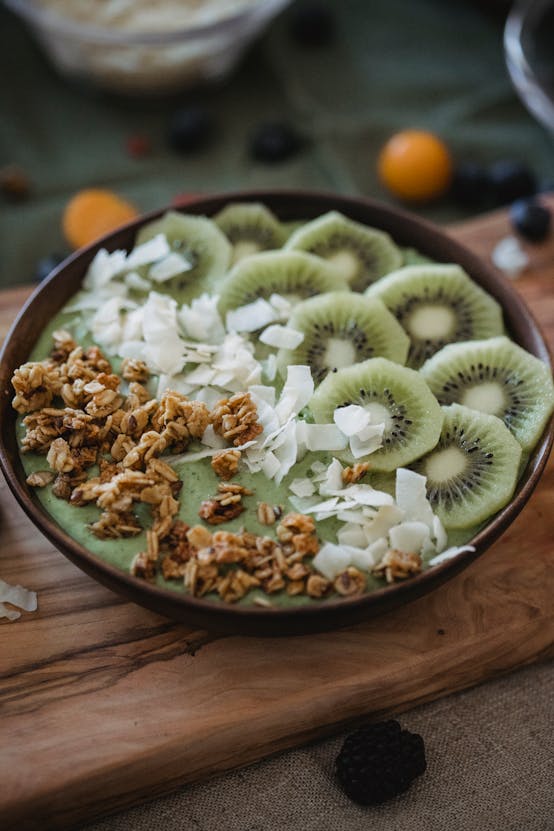Understanding Minimalist Kitchen Design
Minimalist kitchen design embraces simplicity and functionality, prioritising clean lines and a clutter-free environment. One of its main benefits is the creation of an uncluttered, calming space that promotes efficiency and easy maintenance—a concept highly valued in many UK kitchens.
Key Principles of Minimalist Kitchen Design
-
Simplicity: The use of basic colours, often white or neutral tones, creates a serene atmosphere while highlighting the kitchen’s essential features.
Also to see : The Essential Guide to Selecting an Eco-Conscious Coffee Maker: Your Go-To Resource for Sustainable Living in the UK
-
Functional Layout: Prioritising practical storage solutions helps maintain a clean countertop. Integrating streamlined, built-in appliances ensures a seamless look.
-
Limited Decorations: Minimalist kitchens often feature select, quality decor pieces to complement the design, such as a single piece of art or a well-placed plant.
Topic to read : Transform Your UK Galley Kitchen: Key Strategies for Stylish Functionality and Practical Elegance
To achieve a clutter-free space, assess your kitchen’s current layout and identify unused or rarely used items. Declutter by removing unnecessary tools, opting for multifunctional appliances where possible. Streamlined cabinets and open shelving can enhance the minimalist feel. These allow for a practical display rather than clutter accumulation.
Overall, a minimalist kitchen design not only provides aesthetic appeal but also boosts functionality in everyday cooking and cleaning tasks, offering a harmonious balance between form and utility.
Budget-Friendly Redesign Tips
Affordable kitchen makeovers are increasingly popular, allowing homeowners to transform their kitchens without overspending. Setting a realistic budget is the first crucial step. This involves assessing your financial limits and determining which elements of your kitchen need immediate attention. Prioritising projects can significantly impact the budget: it’s wise to focus first on high-impact areas. For instance, updating cabinet fronts or countertops can create a striking change without a complete overhaul.
Cost-effective ideas include painting walls and cabinets or updating fixtures and hardware—simple changes that can rejuvenate the room’s appearance and apply minimalist design principles effortlessly. DIY solutions can also lower expenses significantly, allowing for customisation in line with personal preferences.
Another cost-saving strategy is to reuse or repurpose existing materials. For example, refinishing wooden parts or using affordable materials like laminate for countertops aligns with a budget-friendly approach while maintaining style. By carefully planning and prioritising each stage of the kitchen makeover, homeowners can enjoy a modern, stylish kitchen without financial strain. This approach suits UK kitchens particularly well, where space and resources might be limited.
Selecting Stylish Materials
Creating a stylish kitchen renovation while staying budget-friendly is achievable by choosing affordable materials without sacrificing quality or aesthetics. A strategic selection of materials is essential. Opt for durable yet economical options like laminate for countertops and vinyl flooring. These materials provide a modern look, fitting well within minimalist aesthetics.
In the UK, various suppliers offer chic yet cost-effective options. Retailers such as Wickes and B&Q cater to a range of styles and budgets, providing materials that align with minimalist design principles. For instance, you can find affordable cabinetry and stylish hardware that complement a clean, clutter-free kitchen environment.
When choosing finishes, focus on textures and shades that align with the minimalist aesthetic. Neutral tones and simple patterns often work best, enhancing the serene and orderly feel of the space. Consider mixing textures, like matte and glossy, to add subtle interest without overwhelming the design. By carefully selecting affordable yet stylish materials, you can achieve a sophisticated kitchen look, ideal for the constraints and desires of UK kitchens.
Tools for Minimalist Makeover
For a successful DIY kitchen renovation, having the right tools is essential. Here’s an overview of necessary tools that make the transformation seamless and efficient. Key items include a cordless drill, a tape measure, and a level, which ensure precision and proper alignment during installations. A utility knife and a range of screwdrivers are also invaluable for numerous tasks.
Deciding whether to rent or buy tools depends on your project’s scope and frequency of use. Renting specialised tools, like tile cutters, is cost-effective for single-use needs. However, purchasing essential equipment used in multiple projects can be a worthwhile investment.
Safety measures are paramount in any DIY endeavour. Equip yourself with protective gear, such as gloves and safety goggles, to prevent injuries. Always follow manufacturer guidelines and handle power tools with care. Moreover, ensure your workspace is well-lit and organised to minimise accidents. Adhering to best practices not only safeguards you but also ensures the quality of the renovation. By arming yourself with the essential equipment and prioritising safety, you can achieve a minimalist kitchen design with confidence.
Step-by-Step Makeover Process
Transforming your kitchen into a minimalist haven doesn’t have to be daunting. With a well-structured DIY kitchen renovation guide, it’s straightforward to achieve a modern look without professional help.
Planning Your Space
Begin by evaluating your kitchen’s layout. Precise measurements are crucial to plan layouts effectively. Visualise how each component will fit within the space while adhering to minimalist design principles. Consider multifunctional layouts that enhance both efficiency and aesthetics.
Execution and Installation
Next, focus on executing your plan meticulously. Follow the kitchen remodel steps carefully, starting with the installation of necessary features like cabinetry or countertops. Ensure all elements align with the minimalist theme, maintaining clean lines and functionality.
Final Touches and Styling
Once installation is complete, integrate personal style into your kitchen revamp. Choose styling elements that resonate with your taste while encapsulating a clutter-free ethos. Simple decor additions, such as a sleek vase or textured rug, can enhance the minimalist vibe without overwhelming the space.
By proceeding step-by-step, from planning to final styling, your kitchen will reflect a thoroughly polished and cohesive minimalist design.
Inspiration and Resources
When planning a minimalist kitchen in the UK, abundant kitchen design inspiration can be found online and offline. Numerous blogs, social media, and magazine features offer creative ideas and practical tips. Websites such as Pinterest and Instagram are treasure troves of stunning minimalist designs, showcasing everything from layout options to material choices.
Engage with online resources and communities like home improvement forums and design sites. These platforms provide valuable insights and peer recommendations to refine your vision. Many UK-based communities focus on local design tastes, making them particularly relevant.
In terms of sourcing materials and fixtures, UK locals are fortunate to have access to numerous local suppliers and showrooms. By visiting these places, you can experience firsthand the look and feel of different options. Retailers like IKEA and Howdens offer a range of affordable products that align with the minimalist aesthetic. Showrooms not only provide a tangible perspective on potential choices but also offer professional advice tailored to your needs.
Remember, the right mix of ideas and practical resources can transform your minimalist kitchen vision into a reality effortlessly.


